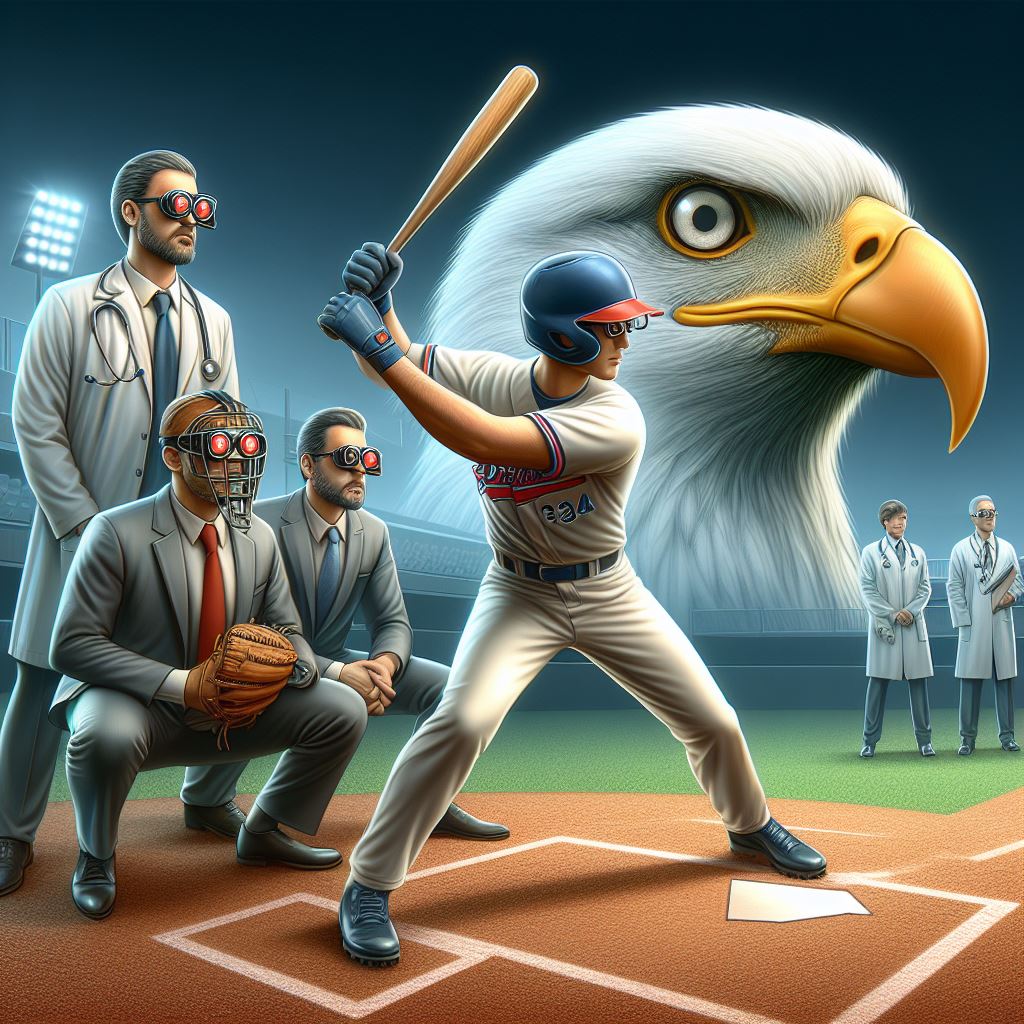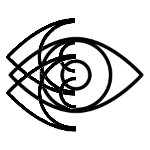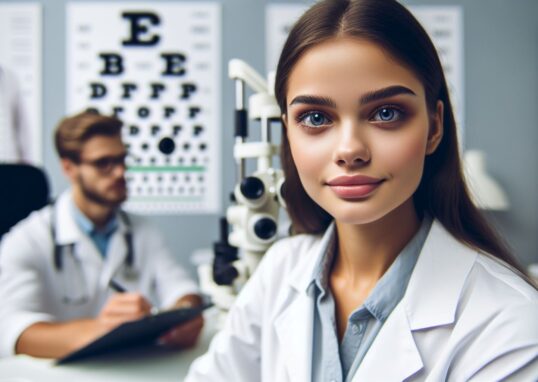
Introduction
When it comes to sports, vision plays a pivotal role in an athlete’s performance. It’s not just about seeing clearly; visual skills impact various aspects of an athlete’s abilities. Let’s delve into why vision matters and the specific visual demands athletes face during training and competitions.
Importance of Vision in Sports
Visual acuity, eye-hand coordination, depth perception, and peripheral vision are all critical components of an athlete’s visual skillset. These skills directly influence an athlete’s ability to perform specific tasks on the field or court. Imagine a basketball player making split-second decisions during a fast break or a tennis player tracking a speeding ball across the court. Their vision guides their actions, allowing them to react swiftly and accurately.
Visual Demands Athletes Encounter
Athletes face intense visuo-motor demands. These demands require rapid decision-making based on visual input. Here are some key visual skills relevant to sports:
- Eye Tracking: The ability to follow moving objects, crucial for sports like tennis, soccer, and baseball.
- Visual Memory: Remembering patterns, opponents’ movements, and play sequences.
- Peripheral Vision: Detecting motion and opponents approaching from the sides.
- Depth Perception: Judging distances accurately, essential for activities like golf and archery.
These visual skills allow athletes to anticipate opponents’ actions, track the ball, and make split-second decisions. Approximately 80% of the information athletes gather about their environment comes through their eyes, making vision a game-changer in sports.
For more detailed information, you can explore the following sources:
- Vision and sports: An overview
- Sports Vision: Influence on Athlete’s Performance
- Visual Performance in Sports: Assessment, Training and Improvement
Remember, optimal vision isn’t just about 20/20 clarity; it’s about enhancing these visual skills to elevate your game.
The Refractive Error of Professional Baseball Players – Study
High levels of visual acuity are crucial for hitting a baseball effectively. Research has revealed that any decline in vision is often due to low-order optical aberrations. In this study, conducted by Laby and Kirschen, the focus was on validating the SVOne autorefractor and describing the extent and type of low-order optical aberrations present in a large cohort of professional baseball players.
Purpose
The primary purpose of this study was to validate the SVOne autorefractor, a device used to measure refractive error, specifically in the baseball population. Understanding the refractive status of athletes is essential for optimizing their visual performance on the field.
Findings
During the 2016 Spring Training Season, a retrospective chart review was conducted on 608 Major League Baseball players. Results from a subset of players who underwent both manifest refraction and autorefraction were analyzed. The SVOne autorefraction system demonstrated a mean spherical refractive error (M) of −0.228D, a J0 value of −0.013D, and a J45 value of −0.040D for the entire eligible population. Notably, there was a borderline statistically significant difference in mean spherical refractive error between manifest refraction and SVOne autorefraction in the subset of athletes who underwent both tests. The system tended to report slightly more myopia in myopic subjects.
Recommendation
Based on these findings, it is strongly recommended that careful evaluation of the refractive status of professional baseball players be conducted. For those with less than average vision for baseball, subjective refractive correction should be administered cautiously. Ensuring optimal vision is critical for enhancing performance on the baseball field.
For more detailed information, you can explore the following sources:
- Optometry and Vision Science: The Refractive Error of Professional Baseball Players
- ResearchGate: The Refractive Error of Professional Baseball Players
- Academia.edu: The Refractive Error of Professional Baseball Players
Vision and Sports Performance
When it comes to sports, vision plays a pivotal role in an athlete’s performance. It’s not just about seeing clearly; visual skills impact various aspects of an athlete’s abilities. Let’s delve into why vision matters and the specific visual demands athletes face during training and competitions.
Visual Acuity: Clarity of Sight
Visual acuity refers to the sharpness of your vision at a certain distance (typically 20 feet). It’s expressed as a fraction, such as 20/20. When people say they have 20/20 vision, they’re talking about their visual acuity. This ability allows athletes to spot details, track moving objects, and react swiftly.
Eye-Hand Coordination: Precision in Motion
Eye-hand coordination is crucial for precise movements. It’s the ability to synchronize visual input with precise hand actions. Think of a basketball player dribbling down the court or a tennis player serving. Their eyes guide their hands, ensuring accurate execution.
Depth Perception: Judging Distances
Depth perception allows athletes to accurately judge distances between objects. Whether it’s hitting a baseball or making a golf putt, depth perception ensures precise spatial awareness. Without it, we’d struggle to differentiate between nearby and distant objects.
Peripheral Awareness: Reacting to the Periphery
Peripheral vision is our side vision. It’s essential for tracking opponents, anticipating movements, and avoiding collisions. Football players, for instance, rely on peripheral awareness to navigate the field and react swiftly to changing game situations.
Dynamic Visual Acuity: Clarity in Motion
Dynamic visual acuity involves maintaining clarity while in motion. Athletes need to track fast-moving objects, such as a tennis ball or a sprinting opponent. It’s the ability to process visual information even during rapid changes.
For more detailed information, you can explore the following sources:
- Sports Vision: Influence on Athlete’s Performance
- Vision Skills for Sports
- Judging Distances and Depth Perception Change with Arm Length
Collaborative Approach: Sports Medicine and Ophthalmology
In the dynamic world of sports, vision is more than just seeing clearly—it’s a critical factor in an athlete’s success. Approximately 80% of perceptual input in sports is visual, making eye health and sports medicine closely intertwined fields. Let’s explore why collaboration between sports medicine professionals and ophthalmologists is essential for athletes:
1. Working Together for Athlete Well-Being
Sports medicine professionals and ophthalmologists join forces to provide comprehensive eye care. Athletes receive guidance on proper eye protection, education about eye health practices, and personalized care. Whether it’s preventing injuries or managing existing eye conditions, this collaborative approach ensures athletes can perform at their best.
2. Detecting Inconspicuous Symptoms
Not all vision problems are obvious. Athletes may experience subtle issues like blurred vision, double vision, or light sensitivity. These seemingly minor symptoms can significantly impact performance. By promptly detecting and addressing such issues, we prevent systemic injuries caused by impaired vision.
3. The IOC Consensus Paper
The International Olympic Committee (IOC) recognizes the importance of ophthalmic health assessment in elite sports. Their consensus paper outlines evidence-informed approaches to managing eye-related issues. From ocular trauma prevention to vision optimization, the IOC’s efforts benefit athletes worldwide.
For more detailed information, you can explore the following sources:
- International Olympic Committee (IOC) Consensus Paper on Sports-Related Ophthalmology Issues
- Multidisciplinary Collaboration Between Ophthalmology and Optometry
- Is Healthcare a Team Sport? Widening Our Lens on Interprofessional Collaboration
Sports Vision Training and Eyewear
Sports vision is a critical component for athletes aiming to excel in their chosen sport. It focuses on enhancing visual abilities essential for peak performance. Let’s delve into the details:
Sports Vision Training Programs
Sports vision training involves customized eye exercises tailored to individual athletes. These exercises target specific visual skills, helping athletes perform like well-oiled machines. Here are some key aspects:
- Eye-Hand Coordination: Exercises improve the coordination between what the eyes see and how the hands respond. This skill is vital for catching, throwing, and hitting.
- Dynamic Visual Acuity: Athletes learn to see objects clearly while in motion. Think of tracking a fast-moving ball during a game.
- Peripheral Awareness: The ability to see things out of the corner of your eye. It’s crucial for situational awareness and avoiding collisions.
- Focusing: Rapidly shifting focus from one object to another. Imagine scanning the field during a soccer match.
- Reaction Time: The speed at which an athlete perceives a visual event and responds. Faster reactions lead to better performance.
- Depth Perception: Quickly judging the distance and speed of objects. Essential for accurate passing and shooting.
- Balance: Staying upright and maintaining control during dynamic movements.
These skills vary across sports, and identifying strengths and weaknesses helps tailor training programs effectively.
Contact Lenses for Performance
When it comes to eyewear, contact lenses offer distinct advantages for athletes:
- Better Peripheral Vision: Unlike eyeglasses, contacts provide a wider field of view, essential for tracking opponents and anticipating plays.
- Unobstructed Field of View: No frames block or distort vision, allowing athletes to react faster and see more of their surroundings.
- Less Chance of Fogging Up: Contacts remain clear regardless of weather conditions, unlike glasses that can fog up or get splattered.
- Reduced Risk of Injury: Contacts won’t break and cause eye injuries during intense play.
- Stable Vision: No worries about glasses sliding down or falling off during a game.
Consider daily disposable contact lenses for hassle-free use during sports. They eliminate the need for lens care and storage.
Remember, sports vision training and appropriate eyewear can give athletes a competitive edge, enhancing their performance on the field or court.
Conclusion
As we wrap up our exploration of eye health in the context of athletic performance, let’s revisit some key takeaways:
- Visual Vitality: Vision is a fundamental component of athletic success. Nearly 80% of perceptual input in sports is visual).
- Eye Injuries: Athletes face a higher risk of eye injuries due to the physical nature of sports. These injuries can have lifelong consequences, emphasizing the need for preventive measures.
- Performance Hurdles: Beyond injuries, athletes may encounter vision problems that impact their performance. Blurred vision, double vision, and light sensitivity can hinder their game.
- Collaboration Matters: The interdisciplinary nature of sports medicine calls for collaboration between sports medicine professionals and ophthalmologists. Together, they can provide athletes with evidence-based eye care, proper protection, and guidance on maintaining good eye health.
- Evidence-Based Practices: To optimize athletic performance, evidence-based nutritional strategies play a crucial role. Qualified health care providers can offer tailored nutrition counseling to enhance overall health and athletic prowess.
Remember, protecting an athlete’s vision isn’t just about winning medals—it’s about ensuring their well-being and enabling them to perform at their best. Let’s continue to champion eye health in the world of sports!





